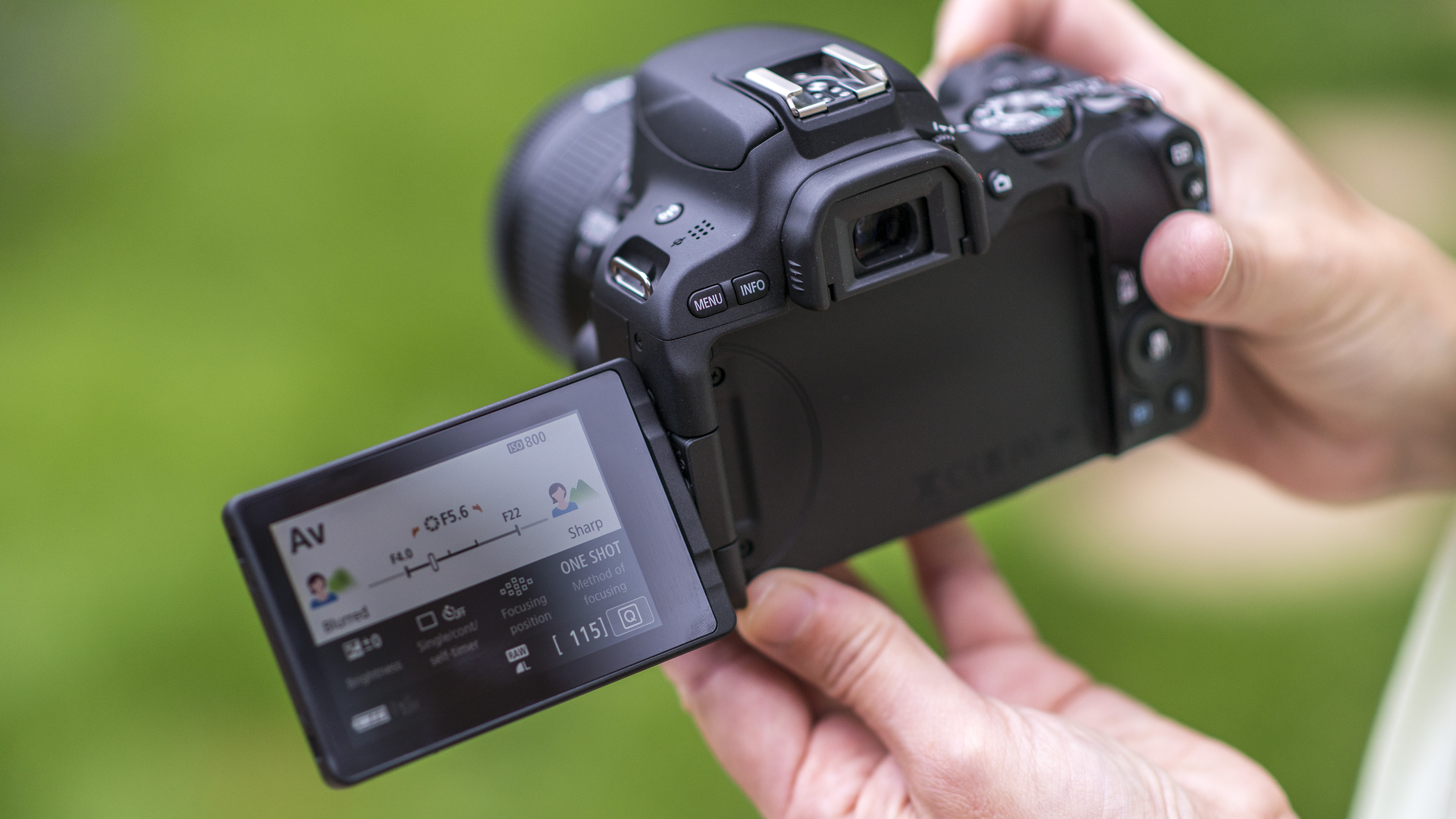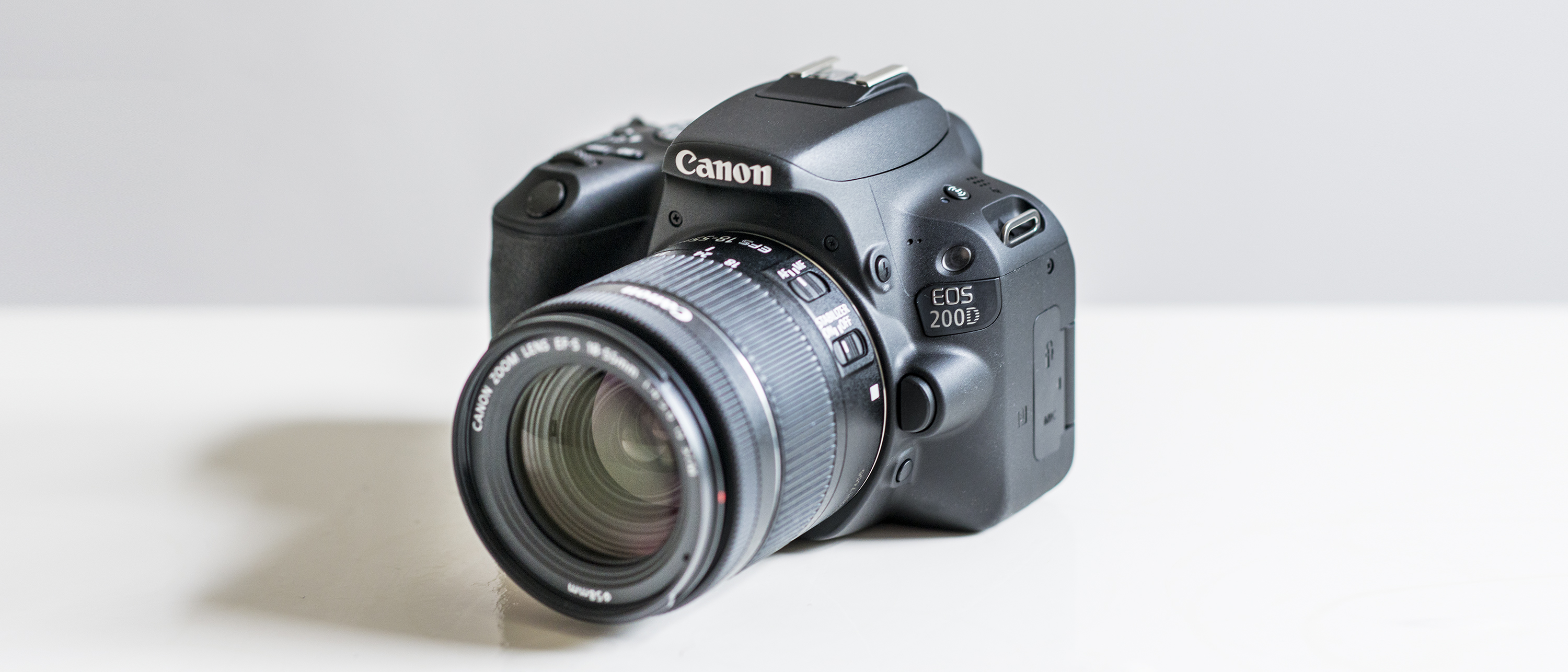Why you can trust TechRadar
Performance
- 5fps burst shooting
- UHS-I compliant
- 650-shot battery life
With the arrival of the DIGIC 7 engine, Canon has stretched the burst shooting speed of the EOS Rebel SL2 / EOS 200D to 5fps, from 4fps on the Rebel SL1 / 100D. This burst rate is what we'd expect from entry-level DSLR at this price point, but those wanting to regularly shoot a fast sequence of shots, and who are on a budget, might want to look at some mirrorless rivals.
Many of the features we’ve seen on much pricier EOS models have also made the cut here, such as the various lens aberration corrections and the time-lapse movie mode. Impressively, you even get in-camera raw processing, which is great for those who want to share their images immediately without compromising on quality.
If that all sounds quite advanced, don't be put off, as the EOS Rebel SL2 / EOS 200D is perfect for new users thanks to the clean graphical user interface. This is an area in which Nikon has been really strong, with its Guide Mode on the likes of the D3300, so it's good to see Canon follow suit.

We first saw this interface on the T7i / 800D, and those taking their first steps in creative photography should find it really useful. Key settings are explained on screen, while the effects of changing a setting are illustrated in the various shooting modes. For example, in Aperture Priority mode the display will show what settings are needed for a blurred or sharp background, with annotations that change as you increase or decrease the aperture.
If you're a more experienced user looking to use the Rebel SL2 / 200D as a second body, you can disable this feature in the menu if you wish, and stick with Canon's more traditional menu system.
Those making their first steps with creative photography should find the graphical user interface really useful
The Rebel SL2 / 200D's metering is handled by a 63-zone dual-layer metering sensor, with Evaluative, Partial, Centre-weighted and Spot metering options. We found the Evaluative mode did a sound job; it did have a slight tendency to underexpose shots, but that's no bad thing in bright conditions when you want to preserve highlights.
The white balance system performs well, and it's nice to see the inclusion of an optional Ambience Priority white balance mode, which delivers a slightly warmer look to help retain the atmosphere of shots that can sometimes be lost. For occasions when you want a more neutral result, the White Priority white balance mode delivers clean, color-cast free results.
Battery life is pretty good – at 650 shots per charge it's actually better than on the Rebel T7i / 800D, and quite a bit better than comparable mirrorless rivals. If you're going to be using Live View for shooting pretty much full-time, though, be warned, as the battery life plummets to 260 shots.
Image quality
- ISO100-51,200
- Noise performance much improved
- Pleasing color rendition
The EOS Rebel SL2 / EOS 200D's 24MP APS-C CMOS sensor does a solid job, rendering very good levels of detail at sensitivities up to ISO1600. You'll easily be able to produce detailed prints at A3 size at 300dpi, while files should be able to be enlarged even further if needed.

At low sensitivities, the Rebel SL2 / 200D handles image noise very well. Images appear noise-free all the way up to ISO3200, with colors nicely saturated. Even at ISO6400, while noise is evident, it's well controlled, and there was hardly any chroma (color) noise present in our shots.
If you're prepared to sacrifice a bit of detail, then ISO12,800 is still very useable, despite both luminance (grain-like) and chroma noise being much more noticeable. Saturation of colors also suffers, but considering the sensitivity setting it's still very good. We'd avoid using settings beyond that unless it's really necessary.

Dynamic range is also good, but it's still not quite a match for rivals like Nikon's D3400 – there's just not the same latitude in raw files to recover highlight and shadow detail.
Current page: Performance and image quality
Prev Page Build, handling and AF Next Page Verdict and competitionPhil Hall is an experienced writer and editor having worked on some of the largest photography magazines in the UK, and now edit the photography channel of TechRadar, the UK's biggest tech website and one of the largest in the world. He has also worked on numerous commercial projects, including working with manufacturers like Nikon and Fujifilm on bespoke printed and online camera guides, as well as writing technique blogs and copy for the John Lewis Technology guide.

